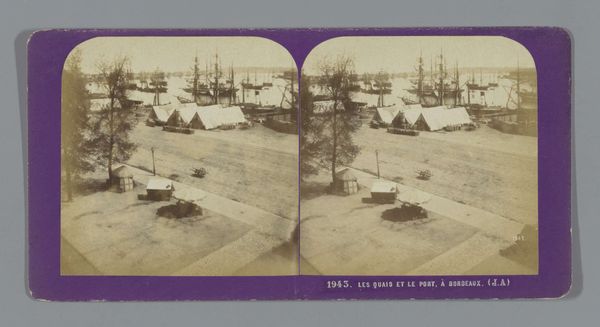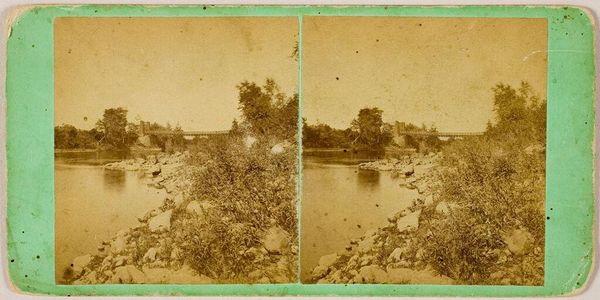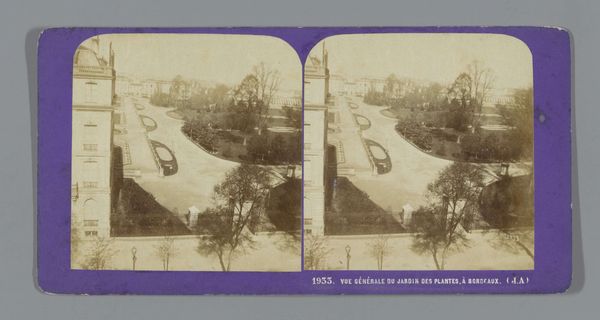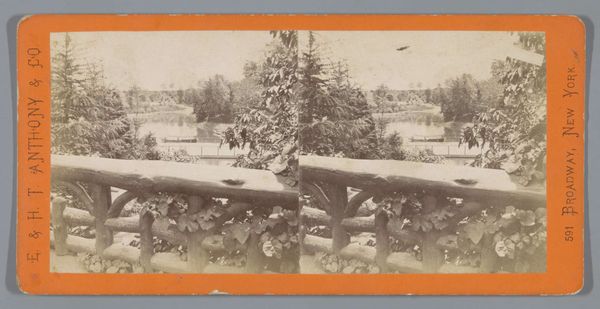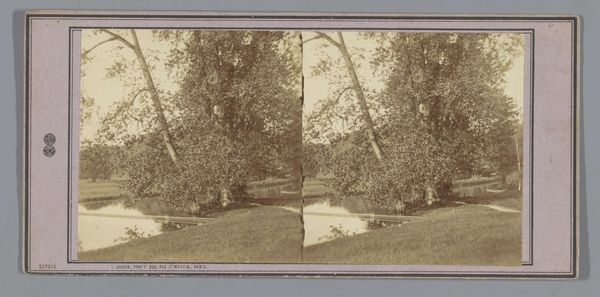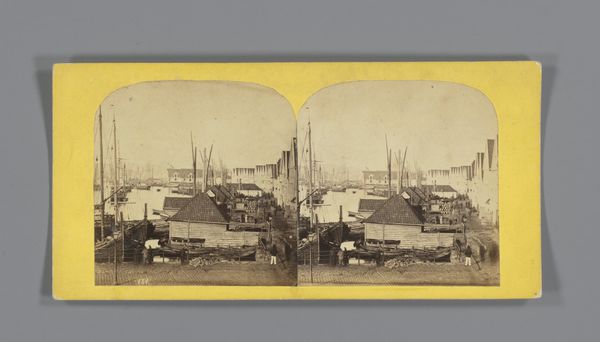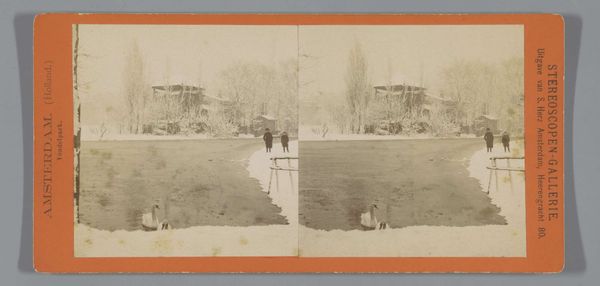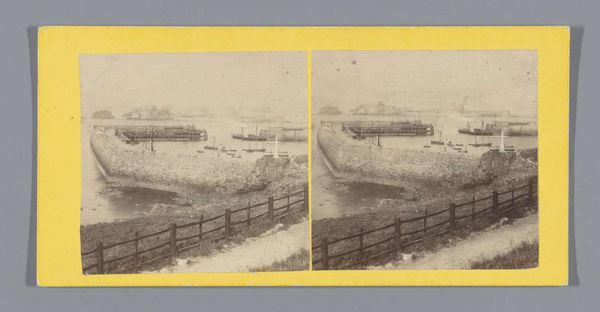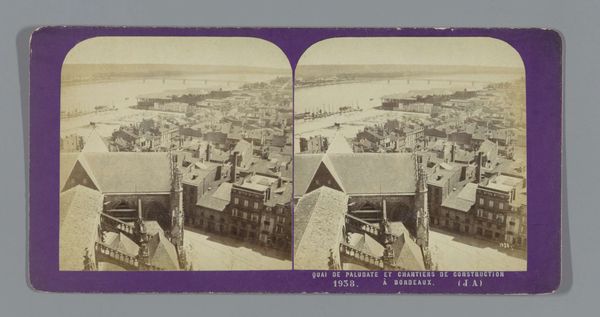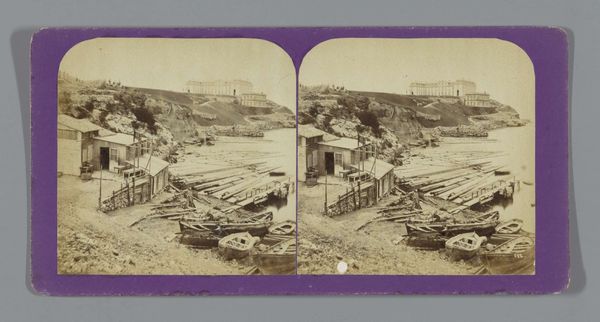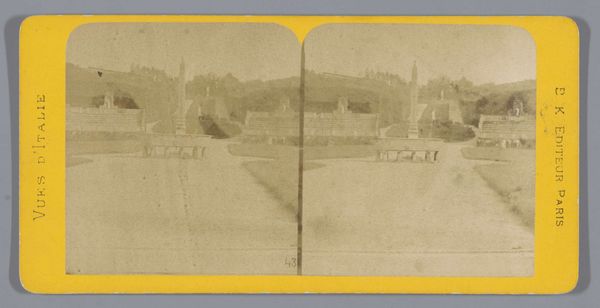
Dimensions: height 85 mm, width 170 mm
Copyright: Rijks Museum: Open Domain
Jean Andrieu made this stereoscopic photograph of the Quais des Chartrons in Bordeaux using the collodion process. This technique, popular in the mid-19th century, involved coating a glass plate with a light-sensitive emulsion, then exposing and developing it to create a negative. The albumen print, made from that negative, is responsible for the image’s sepia tone and soft focus, which evokes the bustling port city. Photography at this time, while celebrated for its objectivity, was also labor-intensive. Each print required careful chemical processing and precise timing, reflecting the growing industrialization of image-making. Here, the double format of the stereoscope is crucial. It gave viewers at the time a heightened sense of reality and depth, and today provides us with a glimpse into the visual culture of an era shaped by new technologies and expanding trade networks. Recognizing the processes involved allows us to appreciate this photograph not just as a picture, but as a manufactured object, embedded in its time.
Comments
No comments
Be the first to comment and join the conversation on the ultimate creative platform.
